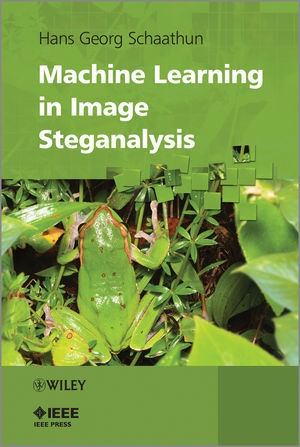Ulteriori informazioni
Informationen zum Autor Hans Georg Schaathun, Department of Computing, University of Surrey, UK Dr Schaathun was previously a lecturer in coding and cryptography at the University of Bergen. Since February 2006, he has been a lecturer at the University of Surrey, UK, belonging to the research group in Digital Watermarking and Multimedia Security. His main research areas are applications of coding theory in information hiding, and machine learning techniques in steganalysis. He teaches Computer Security and Steganography at MSc level, and Functional Programming Techniques at u/g level. Dr Scaathun has published more than 35 international, peer-reviewed articles, and is an associate editor of EURASIP Journal of Information Security . Klappentext Steganography is the art of communicating a secret message, hiding the very existence of a secret message. This is typically done by hiding the message within a non-sensitive document. Steganalysis is the art and science of detecting such hidden messages. The task in steganalysis is to take an object (communication) and classify it as either a steganogram or a clean document. Most recent solutions apply classification algorithms from machine learning and pattern recognition, which tackle problems too complex for analytical solution by teaching computers to learn from empirical data.Part 1of the book is an introduction to steganalysis as part of the wider trend of multimedia forensics, as well as a practical tutorial on machine learning in this context. Part 2 is a survey of a wide range of feature vectors proposed for steganalysis with performance tests and comparisons. Part 3 is an in-depth study of machine learning techniques and classifier algorithms, and presents a critical assessment of the experimental methodology and applications in steganalysis.Key features:* Serves as a tutorial on the topic of steganalysis with brief introductions to much of the basic theory provided, and also presents a survey of the latest research.* Develops and formalises the application of machine learning in steganalysis; with much of the understanding of machine learning to be gained from this book adaptable for future study of machine learning in other applications.* Contains Python programs and algorithms to allow the reader to modify and reproduce outcomes discussed in the book.* Includes companion software available from the author's website. Zusammenfassung Steganography is the art of communicating a secret message, hiding the very existence of a secret message. This book is an introduction to steganalysis as part of the wider trend of multimedia forensics, as well as a practical tutorial on machine learning in this context. Inhaltsverzeichnis Preface xi PART I OVERVIEW 1 Introduction 3 1.1 Real Threat or Hype? 3 1.2 Artificial Intelligence and Learning 4 1.3 How to Read this Book 5 2 Steganography and Steganalysis 7 2.1 Cryptography versus Steganography 7 2.2 Steganography 8 2.3 Steganalysis 17 2.4 Summary and Notes 23 3 Getting Started with a Classifier 25 3.1 Classification 25 3.2 Estimation and Confidence 28 3.3 Using libSVM 30 3.4 Using Python 33 3.5 Images for Testing 38 3.6 Further Reading 39 PART II FEATURES 4 Histogram Analysis 43 4.1 Early Histogram Analysis 43 4.2 Notation 44 4.3 Additive Independent Noise 44 4.4 Multi-dimensional Histograms 54 4.5 Experiment and Comparison 63 5 Bit-plane Analysis 65 5.1 Visual Steganalysis 65 5.2 Autocorrelation Features 67 5.3 Binary Similarity Measures 69 5.4 Evaluation and Comparison 72 6 More Spatial Domain Features 75 6.1 The Difference Matrix 75 6.2 Image Quality Measures 82 6.3 Colour ...

